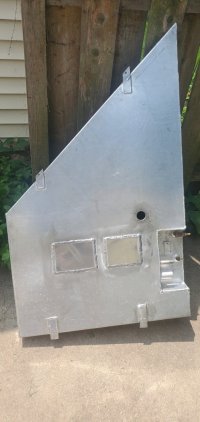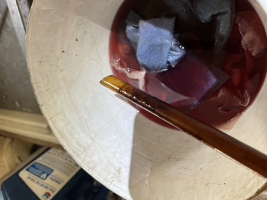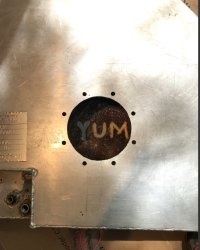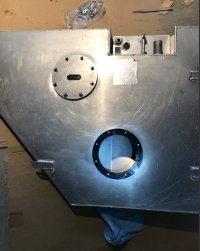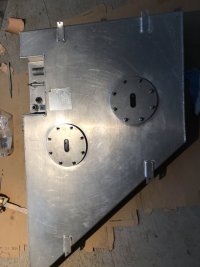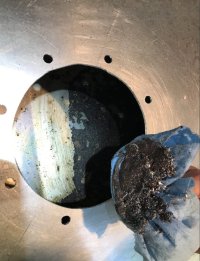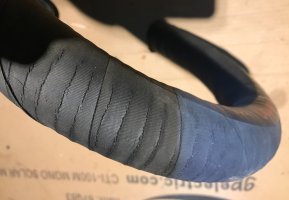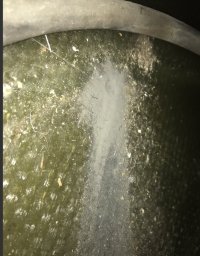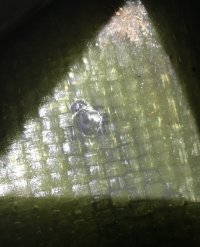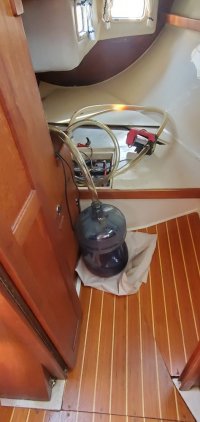You are using an out of date browser. It may not display this or other websites correctly.
You should upgrade or use an alternative browser.
You should upgrade or use an alternative browser.
Polish fuel with Racor ?
- Thread starter JSM
- Start date
ConchyDug
Member III
The brown slime is on the bottom of the tank and is stirred up from the boat rolling. If you bypass the engine and make a loop with some extra fuel hose then agitate the fuel I guess you could. You need an electric boost pump in the system though.
It's pretty easy to build a fuel polisher with cheap Amazon parts.
Also treat the fuel with Biobor or some kind of anti-fungal.
It's pretty easy to build a fuel polisher with cheap Amazon parts.

Also treat the fuel with Biobor or some kind of anti-fungal.
Did the engine stop? If you have spare filters, you can just just change them as necessary. They are in effect polishing your fuel before it gets to the engine. No need to run the engine as a preventive.
If the engine did stop, as the cruise continues you can change them on a schedule to prevent that. As Doug says, it's just gunk dredged up by sailing, and if it were calm the filter probably wouldn't have clogged. With spare filters, no worries.
If the engine did stop, as the cruise continues you can change them on a schedule to prevent that. As Doug says, it's just gunk dredged up by sailing, and if it were calm the filter probably wouldn't have clogged. With spare filters, no worries.
As it turns out my engine died as well (lacking fuel symptoms). The cause was a clogged/stalled fuel pump, likely due to dirty fuel/fuel tank sludge (see picture). I replaced the pump and decided to have the fuel polished (by mistake, had added twice the recommended fuel stabilizer amount) and have the tank professional cleaned. I don't believe it was ever cleaned before. Anyone that had that procedure done?
Attachments
ConchyDug
Member III
I wouldn't pay for fuel polishing, they usually just hook their filter assembly to the tank pick up and let it rip. That doesn't do much for cleaning the tank as the pick up sits about 1" from the bottom of the tank. All the "sludge" sits on the bottom of the tank. You have to agitate that sludge somehow and filter that out with a polishing rig(I use a 10micron filter followed by a 2 or 3 micron filter). Also bulk fuel storage requires maintenance treatments. When you put diesel in your boat you need to find out if it's treated or not. If it hasn't been treated you have to treat it. Biobor is pretty good stuff I've used it for awhile on the boat and at work. The refinery can pre mix it or the end user can mix their own. We bulk treat Jet A with Biobor and it works. I've inspected enough fuel tanks on aircraft to see the results.
reginaldobaker
Member II
to be honest I’d never heard of fuel polishing before this thread - from the searching around I’ve done it doesn’t seem to be highly effective. Glad the filter replacement was effective though - this would’ve been my first move as well.
I cleaned out my “small” 15 gal tank a month/two ago and it was straight forward. Ideally diesel tanks should be easily inspectable and cleanable but not always in practice.
In my opinion filters replacements, manual cleaning, and biocides are all reasonable measures.
Having diesel vehicles makes things slightly easier thoiugh and probably alleviates the need for polishing - at least diesel lasts much longer than gasoline
I cleaned out my “small” 15 gal tank a month/two ago and it was straight forward. Ideally diesel tanks should be easily inspectable and cleanable but not always in practice.
In my opinion filters replacements, manual cleaning, and biocides are all reasonable measures.
Having diesel vehicles makes things slightly easier thoiugh and probably alleviates the need for polishing - at least diesel lasts much longer than gasoline
Lots of helpful replies, and I thought of a "baseline" pair of concerns.Half way thru a 10 day cruise and had a Racor filter clog with brown slime. Changed filter and have motored for 5 hrs with no problems. Is it possible to "self polish" with my Racor by leaving it running while on the dock tonight ?
At the slip the 'gunk' in the tank bottom that you want to filter out will just stay in place and unless you have a way to sweep an intake all around the tank bottom you will not get at it. So the lack of agitation will be a problem.
Then there is the quantity of fuel you would potentially filter with the system when the engine is running. Our mechanic once told me that our small diesels only return a small quantity to the tank via the return hose. These engines do not burn very much fuel, and little of what goes to the lift pump returns to the tank anyway.
The fuel that *does* get pumped to the engine is already filtered twice before it reaches the return line. I had the factory Universal M25XP, for decades,
IF... you have spare filters with you, and due to motoring in steep seas the tank is well-agitated, you will catch most sludge in your filters. But then, you might find yourself changing filters in a rolling boat ( Gag !) .
Best, IMHO, to have a clean-out port on the tank top, where you can just reach in with a flexible pickup and pump out the bottom layer yourself every year or two. Or three. And, if you have a 6" clean out port, a professional can make a much quicker and better job of cleaning with his pump/filter/external tank system, also.
I could never understand "fuel polishing" of 20 gallons of diesel. Costs more to hire somebody than buy new fuel.
Anyhow, as was mentioned, the issue is the tank, not the fuel. It's 30 or 40 years old and has gunk that probably only misbehaves when agitated.
If planning a long cruise, cleaning your own tank is a good project and not all that hard to do.
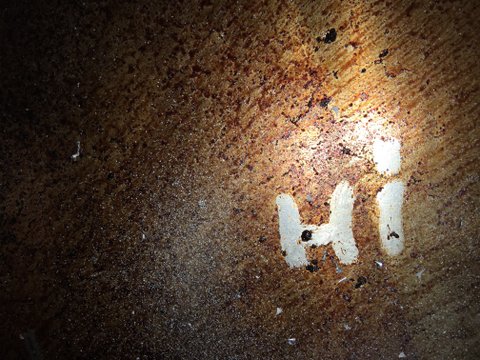
 ericsonyachts.org
ericsonyachts.org
Anyhow, as was mentioned, the issue is the tank, not the fuel. It's 30 or 40 years old and has gunk that probably only misbehaves when agitated.
If planning a long cruise, cleaning your own tank is a good project and not all that hard to do.
E381 - "Thelonious II" -- Fuel Tank Inspection Ports -- Five-Minute Video
I use the engine to charge the batteries, and although there is solar capability on the new boat, I want the engine to run after rough weather has shaken the fuel tank like a rag doll and left arms, legs and little button eyes of ancient glop to...
JSM
Member III
Had tank out 5 years ago for repair and was clean then. I usually de fuel for winter storage but not last year.Anyhow, as was mentioned, the issue is the tank, not the fuel. It's 30 or 40 years old and has gunk that probably only misbehaves when agitated.
Since changing the filter we've motored about 15 hours thru some tank agitating stuff and are still going strong.
Like I said, fingers crossed!
phildogginit
Member II
I had the same problems -- clogged filters, and engine dying in rough water-- until I pulled the fuel tank from the boat and cleaned it. It's worth using an endoscope ($80 from amazon) to have a look inside the tanks. Polishing won't solve the problem.
I did not go the DIY route as Christian describes, but installed 2 Seabuilt hatches.
I also replaced all the fuel lines and the filler hose. No problems with dirty fuel since then.
I did not go the DIY route as Christian describes, but installed 2 Seabuilt hatches.
Seabuilt - Access Plate Systems
www.seabuilt.com
I also replaced all the fuel lines and the filler hose. No problems with dirty fuel since then.
Attachments
Love the 'YUM" notation!
Trivia: those "Seabuilt" access plates were routinely displayed on the shelf at the former Doc Freeman's in Seattle for many decades. That store seemed to have just about everything... !
A lot of us really miss that company.
Trivia: those "Seabuilt" access plates were routinely displayed on the shelf at the former Doc Freeman's in Seattle for many decades. That store seemed to have just about everything... !
A lot of us really miss that company.
phildogginit
Member II
The YUM is a nod to Christian's "Hi" from his photos and video ...
Opening and cleaning the fuel tanks was one of the more rewarding and enjoyable boat projects I've done --
- the shock and amazement at seeing 34 years of diesel gunk in the tank
- the joy of physically wiping it out with an acetone soaked paper towel
- researching solutions -- thanks for the video Christian
- appreciating the engineering of the Seabuilt product and their solution to sealing a gasket on the inside of a tank
- understanding how this system in the boat works
- the satisfaction of replacing 34 year old fuel lines and bonding wire with new gear
... and finally solving the problem of the engine dying when we need it the most.
Along the way I found and fixed some interesting problems
- broken fibreglass tabbing holding the tank
- the tank filler pipe had cracks in it that started to leak after twisting (see pic)
- the corner of the welded aluminum fuel tank was rubbing against the inside of the hull (see pic)
Opening and cleaning the fuel tanks was one of the more rewarding and enjoyable boat projects I've done --
- the shock and amazement at seeing 34 years of diesel gunk in the tank
- the joy of physically wiping it out with an acetone soaked paper towel
- researching solutions -- thanks for the video Christian
- appreciating the engineering of the Seabuilt product and their solution to sealing a gasket on the inside of a tank
- understanding how this system in the boat works
- the satisfaction of replacing 34 year old fuel lines and bonding wire with new gear
... and finally solving the problem of the engine dying when we need it the most.
Along the way I found and fixed some interesting problems
- broken fibreglass tabbing holding the tank
- the tank filler pipe had cracks in it that started to leak after twisting (see pic)
- the corner of the welded aluminum fuel tank was rubbing against the inside of the hull (see pic)
Attachments
Kind of like ours, when replaced about a decade ago.- the tank filler pipe had cracks in it that started to leak after twisting (see pic)
Also, our exhaust (OEM) hose had worse cracks with seeping rusty moisture when I replaced it in 2018.
All those reinforced hoses will reach the end of their useful life anytime after about 20 to 25 years, IMO. I also replaced all the fuel lines --supply, return, and vent, as well.
And like you, the ground wire from tank to deck fill.
Very satisfying!
The satisfaction is (almost) priceless. Plus, you are fully maintaining a vessel with approx. a 350 to 400K replacement value, "like for like."

Great suggestion on the endoscope, just ordered one on Amazon too.I had the same problems -- clogged filters, and engine dying in rough water-- until I pulled the fuel tank from the boat and cleaned it. It's worth using an endoscope ($80 from amazon) to have a look inside the tanks. Polishing won't solve the problem.
I did not go the DIY route as Christian describes, but installed 2 Seabuilt hatches.
Seabuilt - Access Plate Systems
www.seabuilt.com
I also replaced all the fuel lines and the filler hose. No problems with dirty fuel since then.
JSM
Member III
Made it home. Roughly 140 miles and two filter changes. Pumped out remaining fuel which was surprisingly clean and removed tank. Took the tank to a radiator shop this morning and was told that the tank wasn't too bad but wasn't that good either.
They will clean and pressure test the tank and have it back to me later today.
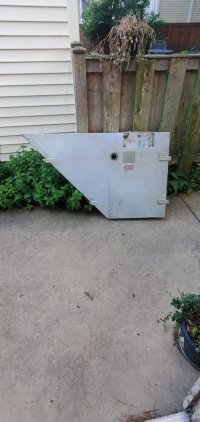
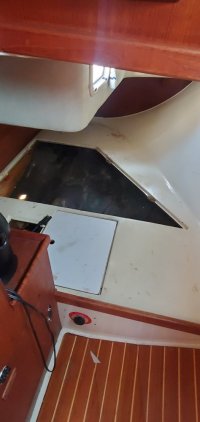
They will clean and pressure test the tank and have it back to me later today.


Attachments
How do they plan to clean it? Can we imitate their procedures?
JSM
Member III
Got a call shortly after dropping the tank off and was told that since there was a baffle in the tank the only way to properly clean it was to open it up in two places, clean it out and then weld patches in place.How do they plan to clean it? Can we imitate their procedures?
Got the tank back at the end of the day and was surprised to see that they had not only cleaned and patched the tank but has also re welded all of the mounting tabs.
Five or six years ago I had the tank cleaned at another shop who only worked thru the fuel gauge hole. No surprised I had problems.
I don't know what they used to clean it with but from what I can see the inside is shiny bright.
Would have liked to install the Sea Built access hatches but the time / $ equation didn't add up.
Total cost $245.00.
